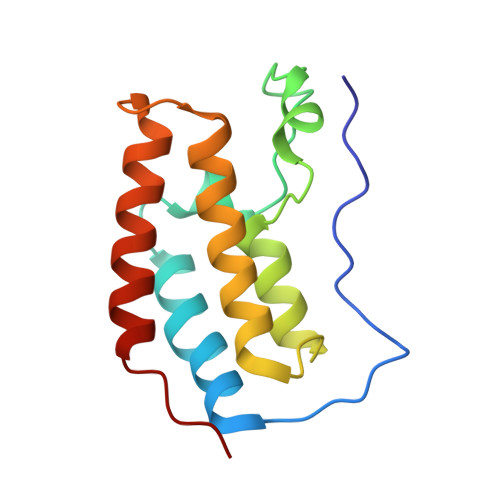Transcriptional Profiling of a Selective CREB Binding Protein Bromodomain Inhibitor Highlights Therapeutic Opportunities.
Chekler, E.L., Pellegrino, J.A., Lanz, T.A., Denny, R.A., Flick, A.C., Coe, J., Langille, J., Basak, A., Liu, S., Stock, I.A., Sahasrabudhe, P., Bonin, P.D., Lee, K., Pletcher, M.T., Jones, L.H.(2015) Chem Biol 22: 1588-1596
- PubMed: 26670081
- DOI: https://doi.org/10.1016/j.chembiol.2015.10.013
- Primary Citation of Related Structures:
5CFW, 5CGP - PubMed Abstract:
Bromodomains are involved in transcriptional regulation through the recognition of acetyl lysine modifications on diverse proteins. Selective pharmacological modulators of bromodomains are lacking, although the largely hydrophobic nature of the pocket makes these modules attractive targets for small-molecule inhibitors. This work describes the structure-based design of a highly selective inhibitor of the CREB binding protein (CBP) bromodomain and its use in cell-based transcriptional profiling experiments. The inhibitor downregulated a number of inflammatory genes in macrophages that were not affected by a selective BET bromodomain inhibitor. In addition, the CBP bromodomain inhibitor modulated the mRNA level of the regulator of G-protein signaling 4 (RGS4) gene in neurons, suggesting a potential therapeutic opportunity for CBP inhibitors in the treatment of neurological disorders.
- Worldwide Medicinal Chemistry, Pfizer, 610 Main Street, Cambridge, MA 02139, USA.
Organizational Affiliation:

















